Your travel expert
Xavier Amigo
Responsible for naturalist, botanical and ornithological travel. Responsible of fixing and professional contact.

This is a birdwatching tour through the heart of one of Colombia's most biodiverse and remote regions. It offers diverse ecosystems and climates, ranging from the country's driest desert to the world's highest coastal range. On this trip, we will traverse the Magdalena River delta, mangrove swamps, and semi-humid coastal forests. The Sierra Nevada de Santa Marta and the Perija mountain ranges rank among the most significant endemic areas in the Neotropics. This tour is also ideal for photography enthusiasts.
Your travel expert
Xavier Amigo
Responsible for naturalist, botanical and ornithological travel. Responsible of fixing and professional contact.

Upon your arrival at Casa Dias International Airport, your driver and guide will greet you and give you a briefing about the upcoming trip. Depending on what time you arrive, a visit to the colonial quarter of the city is also possible. This will be an excellent opportunity to get to know your guide and learn more about the history of this rich and complex country.
Dinner and overnight stay in a colonial hotel located in the historic streets of Cartagena's old town.
English-speaking welcome and transfer
After an early breakfast, we will depart to our first birding location: the Palermo Wetlands, which offers excellent opportunities to observe various waterbirds. By scanning with our scopes at different observation points, we should be able to add many species to our list. Our main target will be the near-endemic Northern Screamer, one of the site’s flagship species. In the afternoon, we'll return to Barranquilla to visit the Guillermo Pineres Botanical Garden and then to the University of the North campus, looking for our first coastal dry forest species.
Optional dinner and overnight stay at a comfortable hotel in Barranquilla.
Transport, English-speaking specialist guide
Target birds: Yellow-headed Vulture, Chestnut-winged Chachalaca, Bare-eyed Pigeon, Black-collared Hawk, Glossy Ibis, Lesser Hornero, Carribean Hornero, Yellow-billed and Large-billed Terns, Wattled Jacana, Southern Lapwing, Russet-throated Puffbird, Orange-crowned Oriole, Yellow-chinned Spinetail, Pale-legged Horneo, Spot-breasted Woodpecker, Carib Grackle and Bronzed Cowbird.
After an early breakfast, we will head north, crossing the mouth of the Magdalena River. After a 40-minute drive, we will arrive at the entrance of Salamanca National Park. We will bird these wetland ecosystems, which consist of lakes, swamps, and mangroves, during the productive early hours. Our main target will be the Sapphire-bellied Hummingbird, a taxonomically-ambiguous endemic hummingbird (some authorities consider it a subspecies of the more widespread Sapphire-throated Hummingbird). Then, we will take the road toward the Guajira peninsula in the north. There is no shortage of aquatic ecosystems along the route, and we will stop to observe as many local species as possible.
Dinner and overnight in Riohacha.
Transport, English-speaking specialist guide
Target birds: Bicolored Conebill, Sapphire-throated Hummingbird, Panama Flycatcher, White-cheeked Pintail, Northern Scrub-flycatcher, Wattled Jacana, Chestnut-winged Chachalaca, Bronze-brown Cowbird, Sapphire-bellied Hummingbird, Pied Water-Tyrant, White-headed Marsh-Tyrant, Red-rumped Woodpecker, Stripe-backed Wren, Russet-throated Puffbird, White-necked Puffbird, Brown-throated Parakeet, Lilac-tailed Parakeet, Roseate Spoonbill, American Flamingo, Scarlet Ibis, White Ibis, Caribbean Hornero, Pileated Finch, Crested Bobwhite, Blue-crowned Parakeet, Brown-throated Parakeet, Black-crested Antshrike, Scaled Dove, Gray Kingbird, Hooded Tanager, White-fringed Antwren, Northern Scrub-Flycatcher, Yellow Oriole, Bare-eyed Pigeon, Black-crested Antshrike, Pale-eyed Pygmy-tyrant, Glaucous Tanager
The arid landscapes of the northern Guajira are home to a wide variety of species also found in neighboring Venezuela. In the xerophytic vegetation south of the driest desert in Colombia, we will look for several regional endemics. The Los Flamencos National Park, particularly the Pericos and Camarones areas, will be our playground today. We will walk through Wayuu Indigenous territory amongst beaches, coastal lagoons, and scrub forests. We will then head back to Santa Marta and its semi-arid coastal ecosystems.
Dinner and overnight in Riohacha.
Transport, English-speaking specialist guide
Target birds: Caribbean Flamingo, Harris's Hawk, Laughing Gull, Caspian Tern, Black Skimmer, Green-rumped Parrotlet, Buffy Hummingbird, Red-billed Emerald, Chestnut Piculet (endemic), White-whiskered Spinetail, Slender-billed Tyrannulet, Black-backed Antshrike, Slender-billed Inezia, Orinocan Saltator, Pileated Finch, Tocuyo Sparrow, Vermillion Cardinal, Roseate Spoonbill, Bare-eyed Pigeon, Venezuelan Flycatcher, Pale-eyed Pygmy-tyrant, Russet-throated Puffbird, Double-striped Thick-knee
After an early breakfast, we will spend the day in Las Gaviotas for further bird watching. These coastal lowland forests contain many bird species we will not see anywhere else: Manakins, Tyrants, Flycatchers, Raptors, and more. We will keep birding in the afternoon and take a break on the white Caribbean beaches. At the end of the day, we will drive to Santa Marta and climb the western foothills of the Santa Marta massif. Several stops are planned along the way. Arrival in the village of Minca, where we will enjoy a well-deserved rest.
Dinner and overnight stay in a charming hotel in Minca.
Transport, English-speaking specialist guide
Target birds: Rufous-tailed Jacamar, Lance-tailed Manakin, White-bellied Antbird, Buff-breasted Wren, Rufous-and-white Wren, Cocoa Woodcreeper, Crimson-crested Woodpecker, Pale-tipped Tyrannulet, Red-billed Scythebill, Trinidad Euphonia, Rufous-vented Chachalaca, Whooping Motmot, Rufous-breasted Hermit
Early in the morning, we will cross the small village of Minca on our way to Pozo Azul. Along the dirt road up to the legendary Sierra Nevada de Santa Marta, we will have the opportunity to observe our first endemic species of the area. In the vicinity of our hotel, we will also take the time to explore several trails on the hillside for more birding. A photographic session on the balcony of our hotel is also planned: toucans, thrushes, tanagers, hummingbirds - there will be plenty to do. The warm and humid temperatures of the area will be an excellent opportunity for a swim at the end of the afternoon. For the more intrepid, we will have the chance to search for nocturnal species near the lodge.
Dinner and overnight in a rustic hotel in Minca.
Transport, English-speaking specialist guide
Target birds: Coppery Emerald, Military Macaw, Golden-fronted Greenlet, Golden-winged Sparrow, Rosy Thrush-Tanager, Common Black-Hawk, Ferruginous Pygmy-Owl, Brown-throated Parakeet, Blue-crowned parakeet, Green-rumped Parrotlet, Red-billed Emerald, Black-backed Antshrike, Rufous-and-white Wrens, Scaly-breasted Wren, Scaled Piculet, Santa Marta Sabrewing
This morning, we will swap our bus for 4WD vehicles, which is essential to climb the secondary road and reach El Dorado Lodge, where we will stay for the next few nights. Depending on the weather and the state of the roads, it will take us about 3 hours to drive only 30 km. Due to its isolation, climate, and altitude, the Santa Marta mountain range offers one of the highest densities of endemic species in the world. More than nineteen species of birds restricted to this massif can be observed there. We will try to observe the majority of them during the next few days.
This area of subtropical perennial forest (high and low) is the only easily accessible one in the Santa Marta Mountains. The two large altitudinal fringes are now protected, thus ensuring the stability of the populations of species endemic to Santa Marta. The El Dorado Lodge, located in the heart of this reserve, offers a breathtaking view of the snowcapped peaks of the Sierra Nevada, the highest mountains in Colombia. After settling into our cabins, if it is early enough, we can observe the rare Black-fronted Wood-Quail and the endemic Santa Marta Brushfinch at feeders around the lodge.
Dinner and overnight at El Dorado Lodge.
Transport, English-speaking specialist guide
Target birds: White-lored Warbler, Santa Marta Brush-finch, Santa Marta Tapaculo, Santa Marta Antbird, Emerald Toucanet, Santa Marta Woodstar, Santa Marta Foliage-gleaner, Santa Marta Tapaculo, Santa Marta Blossomcrown, Lance-tailed Manakin, Streak-capped Spinetail, Scarlet-fronted Parakeet, Spectacled Tyrannulet, White-lored Warbler, Groove-billed Toucanet, Rufous-and-white Wren, Coopmans’s Tyrannulet, Rufous Nightjar, Keel-billed Toucan, Pale-tipped Inezia, Pale-eyed Pygmy Tyrant, Pearly-vented Tody-Tyrant, Rufous-breasted Wren
We’ll leave early for the San Lorenzo Ridge, one of the highest points of the reserve, where we will continue to check for new endemic and isolated species. We will look for the Santa Marta Parakeet in particular. We return to the lodge for lunch and continue birding the lower part, covering all the elevations accessible by road. We will also spend a lot of time exploring the area around the Lodge, where many endemic species are present. Before dinner, we will look for the Santa Marta Screech-Owl and other nocturnal species.
Dinner and overnight at El Dorado Lodge.
Transport, English-speaking specialist guide
Target birds: Santa Marta Parakeet, Santa Marta Toucanet, Santa Marta Antpitta, Yellow-crowned Whitestart, Tyrian Metaltail, Brown-rumped Tapaculo, Santa Marta Mountain-tanager, Black-backed Thornbill, Cinnamon Flycatcher, Black-hooded Thrush, Blue-capped Tanager, Scarlet-fronted Parakeet, White-tipped Quetzal, Rusty-headed Spinetail, Rufous Antpitta (ssp.),Streak-capped Spinetail, Black-cheeked Mountain-Tanager, White-lored Warbler, Santa Marta Tapaculo, Golden-breasted Fruiteater, Santa Marta Screech-Owl
This morning, we will go slightly higher up in the reserve to accompany one of the park rangers to the feeding area of one of the region’s most challenging and rare species: the Santa Marta Antpitta; endemic, of course! Depending on the time of year, these shy undergrowth birds can be easily observed and photographed at the feeder. We will spend the rest of the day exploring the area around the lodge, looking for species missing from our list. There will be opportunities to walk the various forest trails, the main dirt road or to improve your photos at the feeders, which attract hummingbirds, guans, organ grouse, tanagers, brushfinches, thrushes, and many more.
Dinner and overnight at El Dorado Lodge.
Transport, English-speaking specialist guide
Target birds: White-tailed Starfrontlet, Green Violetear, Brown Violetear, Violet-crowned Woodnymph, Long-billed Hermit, Lazuline Sabrewing, Band-tailed Sickle-winged Guans, Blue-naped Chlorophonia, Black-capped Tanager, Santa Marta Warbler, Santa Marta Toucanet, Cinnamon Flycatcher, Black-hooded Thrush, Scarlet-fronted Parakeet, White-tipped Quetzal, and Golden-breasted Fruiteater
Today, we will take advantage of this last morning to complete the observations in the El Dorado area or Minca, depending on the species we’re missing. After lunch, we transfer to Santa Marta to continue our route towards the southern foothills of the Santa Marta mountain range near Valledupar. Despite the remoteness of this site and the long drive, several stops will be incorporated into the route to break up the journey. We’ll arrive in the late afternoon in the capital of Vallenato, one of Colombia’s most representative music styles. If time permits, we will do some birding in the hotel garden.
Optional dinner and overnight stay in a country hotel on the outskirts of the city.
Transport, English-speaking specialist guide
Target birds: Coppery Emerald, Coopman’s Double-striped Thicknee, Tyrannulet, Black-backed Antshrike, Pale-eyed Pygmy Tyrant, Rosy Thrush-Tanager, Golden-winged Sparrow, Santa Marta Antbird, Whooping Motmot, Scaled Piculet, Slaty Finch
After an early departure from our accommodation, we will head to the semi-dry vegetation areas of El Besote for our final lowland species. Although some of the species present here are similar to the northern areas of Santa Marta, they are more easily observed and photographed due to the isolation and low number of visitors these sites receive. We’ll have lunch along the river at Las Dantas before climbing towards the Perija mountain range. This mountain range recently opened to scientific exploration and tourism and is a treasure trove of endemism. A few stops along the way to our new lodge (2620m) will allow us to increase our list of endemics.
Dinner and overnight stay in the heart of the Perija mountain range.
Transport, English-speaking specialist guide
Target birds: Black-backed Antshrike, Venezuelan Flycatcher, Rufous-vented Chachalaca, Red-legged Tinamou, Coppery Emerald, Whooping Motmot, Keel-billed Toucan, Cocoa Woodcreeper, White-eyed Pygmy-Tyrant, Rufous-breasted Wren, Perija Yellow-breasted Brush-Finch, Rufous-chested Chat Tyrant, Crested Quetzal
Long considered an inaccessible area, the heights of this isolated geographical massif are full of ornithological surprises. We’ll leave early to explore the high areas of the Perijá mountain range, particularly the paramo and high-Andean forests. The steepness of this part of the Andes (the northernmost) gives it a table-top-like character. Straddling Colombia and Venezuela, this massif, which reaches a height of 3,650 meters, is a significant orographic relief, especially in the eastern foothills. This humid climate and the equally abrupt succession of vegetation generate a large number of habitats, which have allowed a rather particular but marked adaptation of the species. Many birds, common elsewhere, have unique plumages here, and endemic subspecies will likely be split.
Dinner and overnight at the same accommodation.
Transport, English-speaking specialist guide
Target birds: Andean Condor, Perija Brush-Finch, Perija Thistletail, Perija Tapaculo and Perija Metaltail, Perijá (Rufous) Antpitta (SSP), Great Thrush, Rufous Spinetail, Band-tailed Guan, Streak-backed Canastero, Yellow-bellied Chat-Tyrant, Loungamere's Sunangel, Mountain Velvetbreast, Tyrian Metaltail, Golden-bellied Starfrontlet, White-throated Toucanet, Crimson-mantled Woodpecker, Lacrymose Mountain-Tanager, Mountain and Gray-breasted Wood-Wrens, Chestnut-breasted Chlorophonia, White-browed Spinetail, Paramo Seedeater, Blue-backed Conebill, Highland Tinamou, Rufous-breasted Chat-tyrant , Hooded Mountain-Tanager, Streak-throated Bush-Tyrant
This morning, we can rest around our lodge and take advantage of the feeding areas for some photography. We will also be able to return to the high areas of the Cordillera for any species we’re missing. And it’s not just the birdlife that is diverse here: spectacled bears, capuchin monkeys, agouti, howler monkeys, amphibians, and reptiles are all possible. The flora, an essential element of the ecology of these isolated biotopes, is just as endemic as its avifauna.
Dinner and overnight at the same accommodation.
Transport, English-speaking specialist guide
Target birds: White-rumped Hawk, Black-and-chestnut Eagle, Black-chested Buzzard-Eagle, Perija (Golden-bellied) Starfrontlet (ssp), Amethyst-throated Sunangels, Tyrian Metaltail, Perijá (Todd’s) Parakeet, (ssp) Yellow-breasted Brushfinch (ssp), Slaty Brushfinch, Chestnut-capped Brushfinch, Emerald Toucanet, Rufous Spinetail (ssp), Barred Fruiteater, Plushcap, Buff-breasted Mountain-Tanager, (ssp) Common Chlorospingus (ssp)
This morning, we will descend to the lower areas of Perija. Along the way, we will stop regularly to bird in different ecosystems and coffee and cocoa plantations in the Manaure area (depending on flight schedules). We will then transfer to Barranquilla airport to finalize our list with some species we might have missed. Arrive late afternoon in Barranquilla for your international flight.
Transport, English-speaking specialist guide
Target birds: Highland Tinamou, Hook-billed Kite, Lined Quail-Dove, Greenish Elaenia, Streak-headed Woodcreeper, Lazuline Sabrewing, Steely-vented Hummingbird, Rufous-shafted Woodstar, Coppery Emerald, Golden-headed Manakin, Golden-crowned, Grey-throated and Rufous-capped Warblers, Orange-billed Nightingale-Thrush, Rufous-and-white Wren, Scrub Greenlet, Bran-colored Flycatcher, Chestnut-crowned Antpitta, Fork-tailed Flycatcher, Cattle Tyrant, Golden-winged Sparrow, Whooping Motmot, Golden-fronted Greenlet, White-tipped Quetzal, Venezuelan Tyrannulet, Moustached Puffbird, Perijá Tapaculo, Klages’s Antbird, Fulvous-headed Tanager, Crimson-backed Tanager, Swallow Tanager, Saffron-crowned Tanager, Oleaginous Hemispingus, Gray-throated Warbler, Black-crested Warbler, Rusty Flowerpiercer, Perija Brushfinch, Yellow-throated Toucan and Crimson-rumped Toucanet
Dates of the next departures
You want a personalized departure date? Contact us. Request a personalized date
Prices per person
| Year | 2 travelers | 4 travelers | 6 travelers | 8 travelers |
|---|---|---|---|---|
| 2025 | 5,315 US$ | 4,180 US$ | 3,780 US$ | 3,430 US$ |
You are a group of travelers and want a special rate? Contact us. Request a personalized quote
Included
Not included
Important note
Itineraries may be subject to last-minute changes due to natural disasters or changes in domestic legislation. The visitor must take into account and accept the possibility of last-minute changes in the organisation of the trip. The operator therefore reserves the right to make the necessary changes to ensure the safety and integrity of the travellers and to respect the laws in force. The hotels are given as an indication only and are subject to availability at the time of booking the tour. In case of unavailability, a hotel of the same category will be proposed.
* In US dollars based on double room accommodation. These rates are valid for the dates selected but may be subject to increase at the time of booking and depending on the tourist season and local holidays. Our quotations are calculated in US Dollars and we are committed to this amount. The equivalent value in Euros or in any other currency is therefore indicative and calculated on the basis of the exchange rate on the day of the offer.
** Airfares may vary depending on the airline and availability at the time of booking.
Your guides for this trip
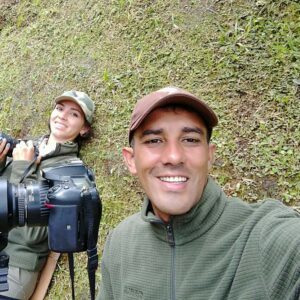
José Ferney Salgado



Colombian by birth, he dedicated the last 15 years of his life to follow with the binocular birds of Colombia. Of the 1880 species of the country he has some 1200 to his credit until then. He is currently in the Top Ten register Ebird 2019. He received a scholarship from the French Alliance of Manizales to continue studying the language of Molière. He knows perfectly every nook and cranny of the country and will accompany you during bird watching and naturalistic observation trips to Colombia. When, with his wife, he does not take care of these three children, both of them are very happy to pursue their new passion: animal photography. And the time they have left, they dedicate it to several conservation and sustainable tourism development projects.
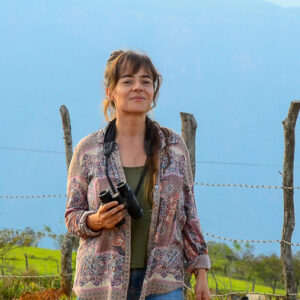
Angela Caycedo




Driven by a passion for nature, culture, languages and sharing, Angela embraced the guiding profession in 2016 (Professional Tourist Guide at SENA - Colombian National Apprenticeship Service). This decision was the fruit of a landmark experience in France, where she studied French language and photography (Etpa - Toulouse school of photography and game design). In search of a life in harmony with my convictions, she wanted to explore and share the beauty of nature, her roots, and her sensitivity to the preservation of her natural and cultural heritage. Since then, she has collaborated as a freelancer with various agencies. In addition, for two years prior to the pandemic, she ran her own travel agency focusing on tailor-made experiences across different regions of Colombia, with an emphasis on nature, culture and ornithology. Her enthusiasm lies in the opportunity to share her passions while conveying a crucial message of nature preservation. By exchanging enriching experiences with others, she seeks to raise awareness and inspire a deep connection with our environment. Her career path revolves around the desire to transmit these values, while offering authentic and memorable experiences to those who choose to discover Colombia alongside her.
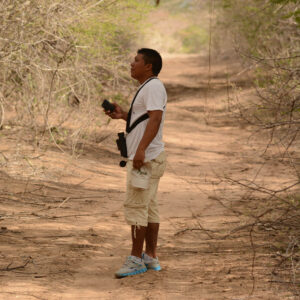
José Luis Pushaina

José Luis is not only an excellent community leader Wayuu, he is also a expert of his native ancestral land, the Guajira, and especially of his avifaune. He knows every nook and cranny of its territory to detect the rarest endemic and representative species of the region. Holder of a degree in Environmental Engineering and a specialization in tourism and ornithology, he actively participates in the development of his native community and has a large number of projects for the protection of the flamenco flora and fauna sanctuary, his main field of work during ornithological trips in Colombia.
Characteristics of the trip
Travel theme |
Birdwatching and photography |
|---|---|
Accompaniment |
English-speaking specialist guide |
Group |
From 2 to 8 people |
Arrival city |
Cartagena |
Departure city |
Barranquilla |
Food |
Local and international meals |
Accommodation |
Charming hotels, lodges and haciendas |
Transport |
Private |
Physical condition |
moderate (some walks at altitude, although slow, can be tiring) |
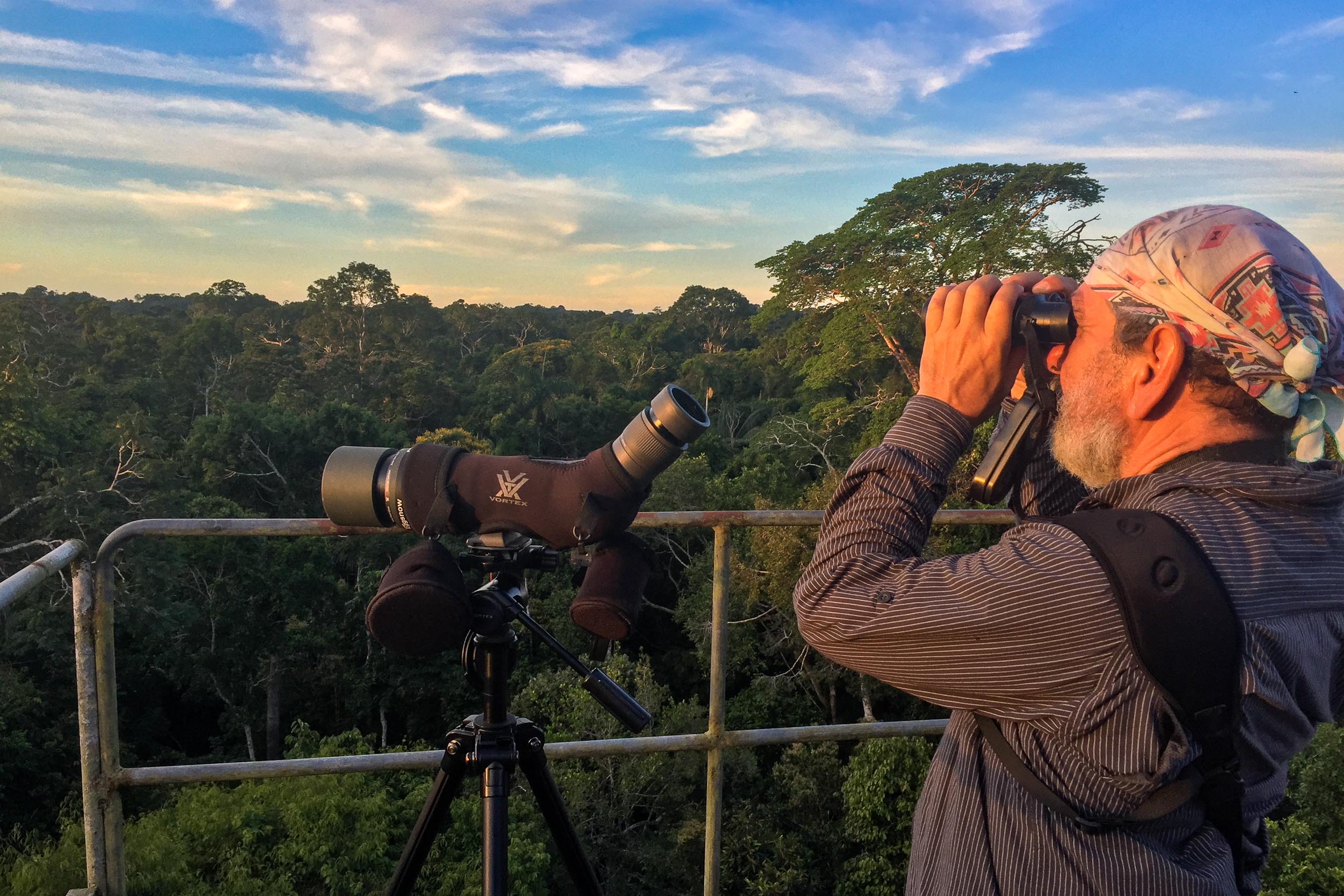
Receive our brochure
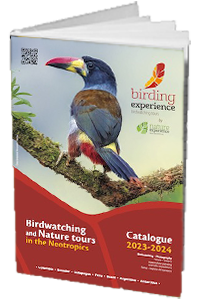
Customize your trip